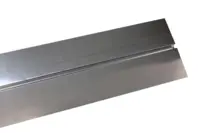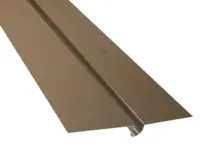- Forside
- Gode råd om gulv
- Konstruktioner
- Udendørsbelægninger
- Akustikpaneler
- Afpassede tæpper
- Bambusgulve
- Bordplader & bordben
- Designgulve
- Fliser og klinker
- BeefEater gasgrill
- Gode råd om gulv
- Gulvtæpper
- Gulvvarme
- Græstæpper
- Korkgulve
- Køkken, bad & garderobe
- Laminatgulve
- Linoleumsgulve
- Maling, Væv & Spartel
- Måtter
- Møbler & Boliginteriør
- Nålefilt og messetæpper
- Plejeprodukter
- Restpartier & gode tilbud
- Sildebensparket & Stavparket
- Tæppefliser
- Terrassebrædder
- Tilbehør
- Trægulve
- Vareprøver
- Vinylgulv
- Værktøj
- Øvrige produkter
- Loft- og vægpaneler
- Flotte gulve
- Fyrretræsgulv
- Klikgulve
- Bestilte varer
-
-26%
-
Populær29,00 DKK
-
29,00 DKK pr m2
-
Populær21,00 DKK
-
29,00 DKK pr m2
Udendørsbelægninger
Alle informationer på denne side er kopieret materiale fra Gulvfakta som er et fagteknisk opslagsmateriale, Kilde: Gulvfakta
Udendørs betonkonstruktioner er udsat for fugt, termiske bevægelser, tøsalte, luftens kuldioxid mv. Derfor vil udendørs betonkonstruktioner langsomt nedbrydes, hvis de ikke beskyttes.
2.5.0.1 Generelt
2.5.0.2 Parkeringsanlæg
2.5.0.3 Altaner og svalegange
Alle informationer på denne side er kopieret materiale fra Gulvfakta som er et fagteknisk opslagsmateriale, Kilde: Gulvfakta
2.5.0.1 Generelt
Konstruktiv beskyttelse af udendørs betonkonstruktioner er en god måde at forhindre skader i at opstå.
Der findes ikke et universelt membransystem, som kan dække alle de påvirkninger, en udendørs betonkonstruktion bliver udsat for. Så forud for valget af et membransystem, bør man derfor foretage en analyse af alle de påvirkninger, en betonkonstruktion udsættes for. Hærdeplastbaserede membransystemer kaldes også 'smøremembraner', fordi de udlægges som en flydende masse. Ved renovering af en ældre eksisterende betonkonstruktion anbefales det, at en teknisk rådgiver vurderer betonens nedbrydningsgrad. Er betonen og armeringen meget nedbrudt, kan nedbrydningsprocessen fortsætte, uanset om betonen bliver beskyttet af en overfladebehandling. Nedbrudt beton kan have konsekvenser for betonkonstruktionens holdbarhed og kan medvirke til skade på tilstødende bygningsdele. Den mest almindelige følgeskade er vandgennemsivning til underliggende bygningsdele.
Inden påføring af et hærdeplastbaseret membransystem skal underlagets beskaffenhed kontrolleres. Kravene kan variere fra system til system, og leverandørens anvisninger skal altid følges. Følgende punkter kræver særlig opmærksomhed:
• Betonens restbyggefugt
• Temperaturen og dugpunktet under udførelsen
• Betonoverfladens trækstyrke
• Betonoverfladen skal være ren og fri for olie, fedt og snavs mv. Betonoverfladen bør derfor afrenses mekanisk som fx ved slyngrensning, diamantslibning eller fræsning for at sikre optimal vedhæftning
• Fuger, rørgennemføringer, tilslutninger til afløb og tilstødende bygningsdele mv. er altid kritiske i forhold til utætheder
Opbygning
Hærdeplastbaserede membransystemer er typisk opbygget af en primer, et membranlag, et slidlag samt en topcoat:
• Primeren skal sikre vedhæftning til underlaget og lukke eventuelle porer i betonen
• Membranen er den elastiske del, der optager bevægelser fra underlaget
• Slidlaget skal sikre, at udefrakommende belastninger ikke skader membranen, samt at skabe en skridsikker belægning tilpasset den enkelte anvendelse
• Topcoaten giver det visuelle udtryk og sikre kemisk samt eventuel UV resistens
Drift og vedligeholdelse
Udendørs membransystemer udsættes for slid og kræver systematisk vedligeholdelse for at forblive funktionsdygtige. Leverandørens drifts- og vedligeholdelsesanbefalinger bør til hver en tid overholdes, og i vedligeholdelsesprogrammet bør følgende elementer som minimum indgå:
• Periodisk rengøring af vandrette overflader for snavs, sand og mindre sten, idet sådanne partikler vil forøge overfladeslidet. Frekvensen vil afhænge af placering og brug. Overfladerne rengøres typisk ved fejning og vask med ph-neutralt vaske- plejemiddel
• Gennemgang af alle overflader for eventuelle skader. Frekvensen for gennemgangen vil afhænge af placering og brug, men gennemgangen bør minimum foretages en gang om året. Skader der ikke er kosmetiske, bør straks udbedres iht. leverandørens anvisning
• Genbehandling af overfladerne må forventes ud fra det aktuelle slid og anvendelse
I nogle membransystemer kan der indbygges en indikator, der markerer, når der er behov for vedligeholdelse.
Fælles for alle de forskellige betonoverflader gælder, at leverandøren af de hærdeplastbaserede membransystemer bør inddrages så tidligt som muligt i projekteringsfasen til valg af det bedst egnede membransystem.
2.5.0.2 Parkeringsanlæg
P-dæk udsættes for store mekaniske, kemiske og termiske belastninger. For at beskytte betonoverfladerne mod disse belastninger kan det være nødvendigt at overfladebehandle dem med fx hærdeplastbaserede membransystemer. En god, tæt og slidstærk beskyttelse af betonoverfladerne er nødvendig for at opnå den forventelige levetid. Udover at beskytte beton og armering mod forvitring og nedbrud, har overfladebehandlingen også en dekorativ/æstetisk og sikkerhedsmæssig betydning. Standarden DS/EN 1504 beskriver anerkendte systemopbygninger og metoder, der kan minimerer risikoen for, at der opstår alvorlige skader. Udendørs P-dæk udsættes for de største belastninger. Som følge heraf har de også det største behov for beskyttelse, hvis de skal kunne bibeholde deres funktionalitet. De mellemste dæk er typisk helt eller delvist beskyttet mod direkte påvirkning fra vejr og vind. Men ellers må det forventes, at de påvirkes i næsten samme grad som de udendørs P-dæk. Det nederste P-dæk må også regnes som et terrændæk, hvorfor der også skal tages hensyn til påvirkninger nedefra som fx opstigende grundfugt mv. Tilkørselsramper kræver særlig opmærksomhed, da de udsættes for store mekaniske påvirkninger fra den kørende trafik, og som følge heraf også må forventes at have et større behov for vedligeholdelse.
2.5.0.3 Altaner og svalegange
Hærdeplastbaserede membransystemer anvendes primært på altaner og svaleganges oversider. De er velegnede til at beskytte beton mod indtrængning af fugt mv. samt at optage de bevægelser, der skyldes temperatursvingninger og konstruktionsmæssige bevægelser. Over- og undersider påvirkes forskelligt, hvorfor det er vigtigt at vælge de rigtige materialer til belægning og overfladebeskyttelse. Til beskyttelse af altaner og svaleganges undersider anbefales en carbonatiseringsbremsende maling.














